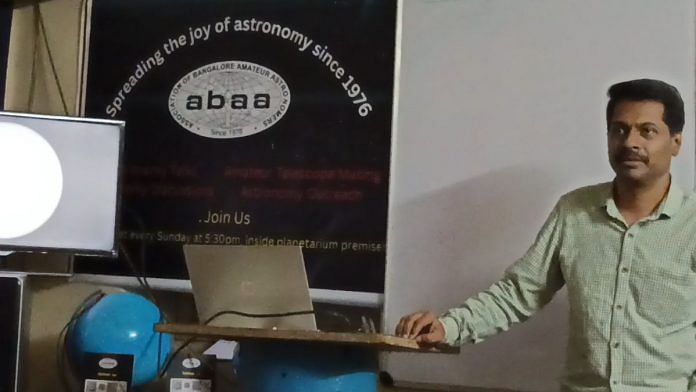On the evening of 18 May this year at the Jawaharlal Nehru Planetarium in Bengaluru, a family waited with excitement to check their weight, not on Earth, but on all the other planets. The room was packed with people from all walks of life. In a few minutes, the crowd rushed together, walking past rocket models, to the sky show theatre around the corner of the hall. The show was about to begin.
For Guruprasad, the director of Jawaharlal Nehru Planetarium (JNP), there is nothing unusual about the crowd pull over weekends. The place attracts more than three lakh people a year, he said.
But JNP, established in late 1980s, is unique and has gone beyond the sky shows. The public science infrastructure that enjoys a special relationship with the nerds of Bengaluru isn’t just about attracting footfalls. It’s not just about the solar system and yet-to- materialise space projects that the space world is aiming to achieve currently. The institution is making real change on the ground when it comes to enabling astronomy research.
Its Research Education Advancement Programme, or REAP, started in early 2000s, has produced over 150 PhDs by giving undergraduates unprecedented early access to research at premier institutes like IISc and IIA. While other planetariums focus on dazzling visuals, the one in Bengaluru builds future scientists, now working at various research institutes.
Much before Vijaykumar Krishnamurthy, faculty member at International Centre for Theoretical Sciences and Ranjani Viswanatha, professor at JNCASR, became scientists, they were REAP graduates.
“If I have to attribute one reason for me getting into all of this advanced scientific research, it was that (REAP) programme,” said Viswanatha, who was part of the early REAP programme in the late 90s. She later returned to the planetarium to teach REAP students.
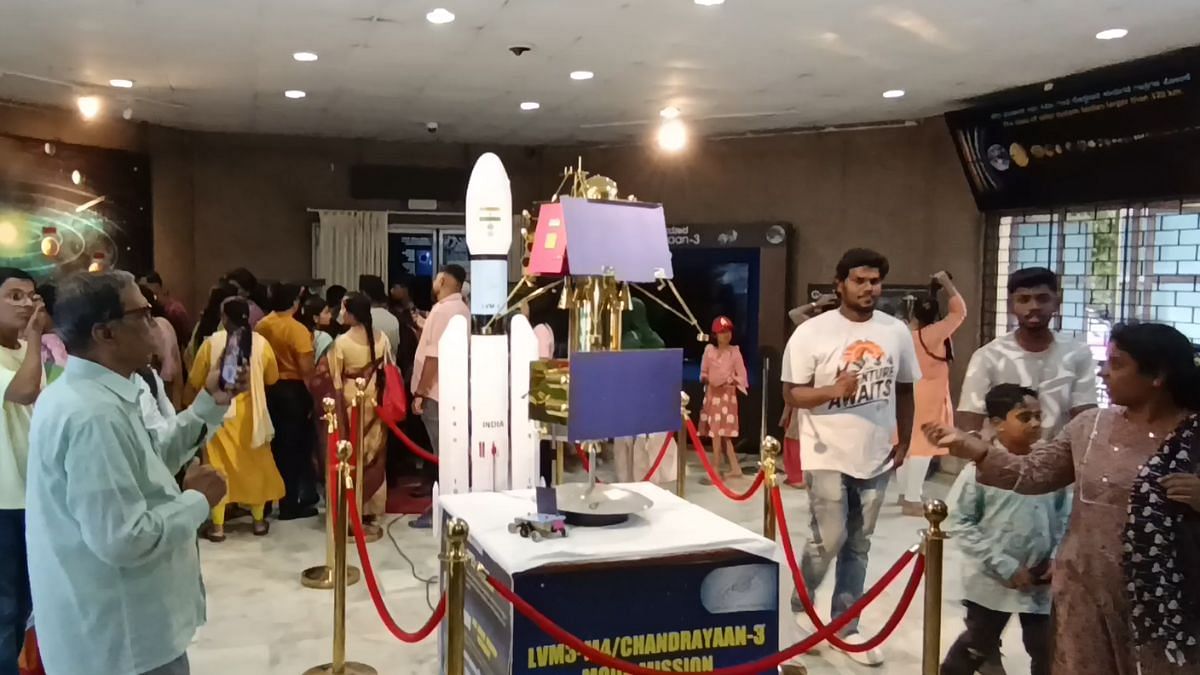
Although funded by the Government of Karnataka, the Bengaluru planetarium is managed by an autonomous body called the Bangalore Association for Science Education (BASE), chaired mostly by eminent scientists.
“I have been to some other planetariums as well. But Bangalore Planetarium has stood out for me mainly because of all these other programmes,” Viswanatha added.
REAP is a three-year programme in physics and astronomy to entice students to pure sciences and prepare them for a career in science. The planetarium receives support from faculty members at Indian Institute of Science, Raman Research Institute, International Centre for Theoretical Sciences, TIFR Bengaluru and Indian Institute of Astrophysics. So far, eminent scientists such as Bala Iyer from International Centre for Theoretical Sciences, and Sandhya Vishweshwaraiah from Indian Institute of Science have taught the REAP students.
Also read: Patna Planetarium is on top of its game today. An IAS officer sparked the transformation
Amateurs on the roll
Partheeban, a mechanical engineer, during his late teens, used to lie to his parents on most Sundays to come to the Association of Bangalore Amateur Astronomers (ABAA) at the JNP.
“I used to tell my parents, I’m going to the planetarium to do my college project,” Partheeban recalled. He was doubtful about how his parents would perceive if he had said that a bunch of geeks gather to just discuss astronomy. ABAA is hosted inside the planetarium, a small, closed space with a library of hard-bound classic books on astronomy printed in the 1970s.
When the planetarium arranged a zero-shadow day last February, the JNP saw a footfall of more than five thousand people in a single day. These astronomy lovers had to handle the large crowd of people while explaining the science behind.
“We want them to love the skies. So, through scientific temper, scientific justification, we try to make them love the skies,” said Ravi Aradhya, a businessman and the president of ABAA.
Aradhya first visited the planetarium in 1995 as a teenager, and three years later, he joined ABAA. Since then, without fail, he attends the weekly meeting, telescope-making workshop, and even has a big part in the planetarium’s outreach activity.
The astronomy club members are a major part of volunteering for a one-night-long sky watch programme. During winters, the session starts around 10 at night and stretches until the next day early morning.
“A few months back, on the Planetary Alignment Day (in February), … around 4,000 people came (to the planetarium). Our members had the patience and they kept on explaining, which the public appreciated,” Aradhya added.
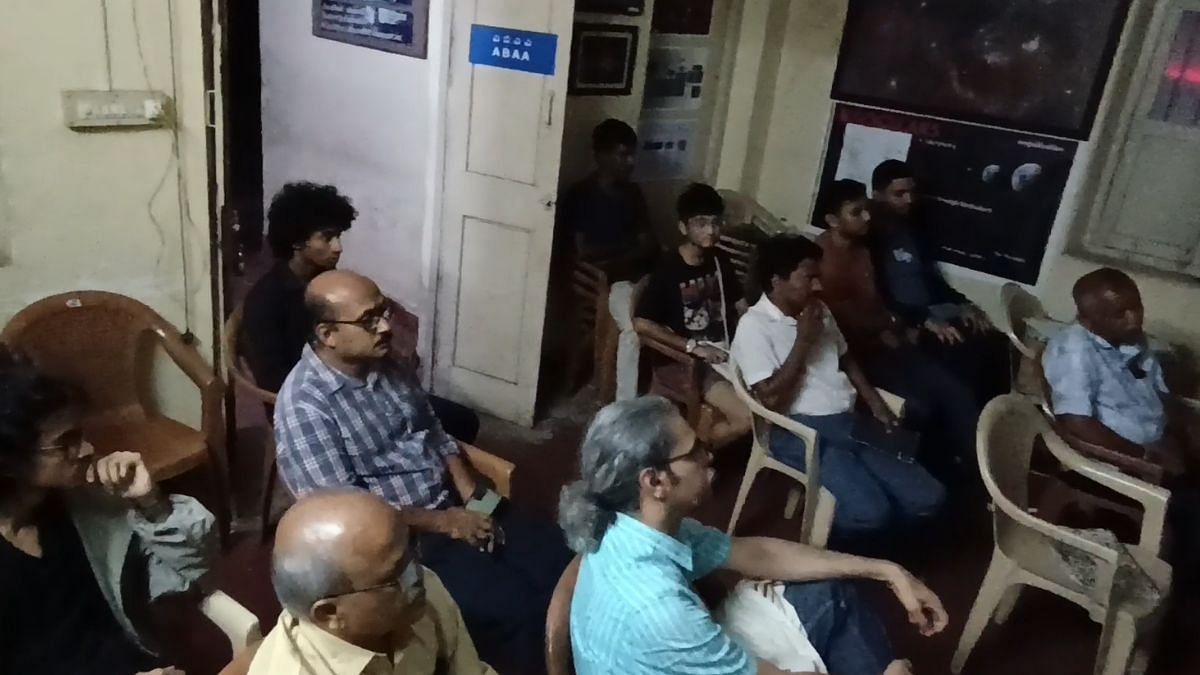
It’s late evening and members of ABAA have walked in to listen to Aradhya’ session on planets. This is part of their weekly candid discussion on astronomy. Waiting for the lecture to start, even as a technical delay is sorted, some members flipped through classic books on telescope making, others browsed through a popular magazine on astronomy from the ABAA’s bookshelf.
In another session that evening, Aradhya shared information on astronomy to a bunch of astronomy enthusiasts.
“Planetarium and ABAA go hand in hand as both are places which want to spread astronomy and space science,” Partheeban added.
Also read: EtherealX to Agnikul, Indian startups enter space defence domain. Op Sindoor was the pivot
Science beyond the classroom
The planetarium’s motive to popularise science is also through extensive education programmes. “We have a good heritage in science, mathematics, and we should make our students proud of that,” said Guruprasad, the director of Jawaharlal Nehru Planetarium (JNP), Bangalore.
These programmes are supported by an eclectic list of institutions such as the Indian Institute of Science (IISc), Indian Institute of Astrophysics (IIA), International Centre for Theoretical Sciences (ICTS) and so on.
“As of now, we want to take up more things, for example, to train teachers,” Guruprasad said. The training programmes are on a mission to help teachers teach astronomy more efficiently.
The vision came from the founding director Vishveshwara, who believed that real science learning happens through experimentation and rigorous study, not just lectures. Even today the planetarium runs according to the plan laid out by the charter director.
“Today, whatever you are seeing here in the planetarium is all according to the plan laid out by C V Visheshwara, the founding director in the beginning,” said Pramod Galgali, former director who joined the planetarium in 1988 as a technical engineer.
“I still remember, he (Vishweshwara) used to say that learning science is by doing,” said H R Madhusudan, former director and now visiting faculty member at the planetarium who joined the planetarium in the 90s. “If we have to attract students and create a good human resource in the field of astronomy research it is possible only by having in-depth and rigorous sessions,” Madhusudan added.
During the first two years of their undergraduate course, students attend rigorous weekend classes that blend theoretical knowledge with hands-on experiments.
“The programme has no entrance exams or fees—any motivated student can join, provided they are willing to commit to its demanding coursework. They will have to sacrifice all of their weekends and commit to the programme,” said Galgali.
The education classes, although non-formal, are very rigorous, and the students have had to do it for the sake of learning, not for grades or anything, according to Galgallil. “Prof. Bala Iyer (who is currently our Governing Council member) would turn away students from the class if they did not do assignments,” Galgali said.
This early exposure means that by the time they complete their undergraduate degrees, they already possess a practical understanding of what research means, according to Madhusudhan and Galgallil.
“This has been going on now for almost 30 years,” Madhusudhan added.
While the education programmes keep happening, director Guruprasad is now busy with scripting new shows to talk about India’s achievements in space.
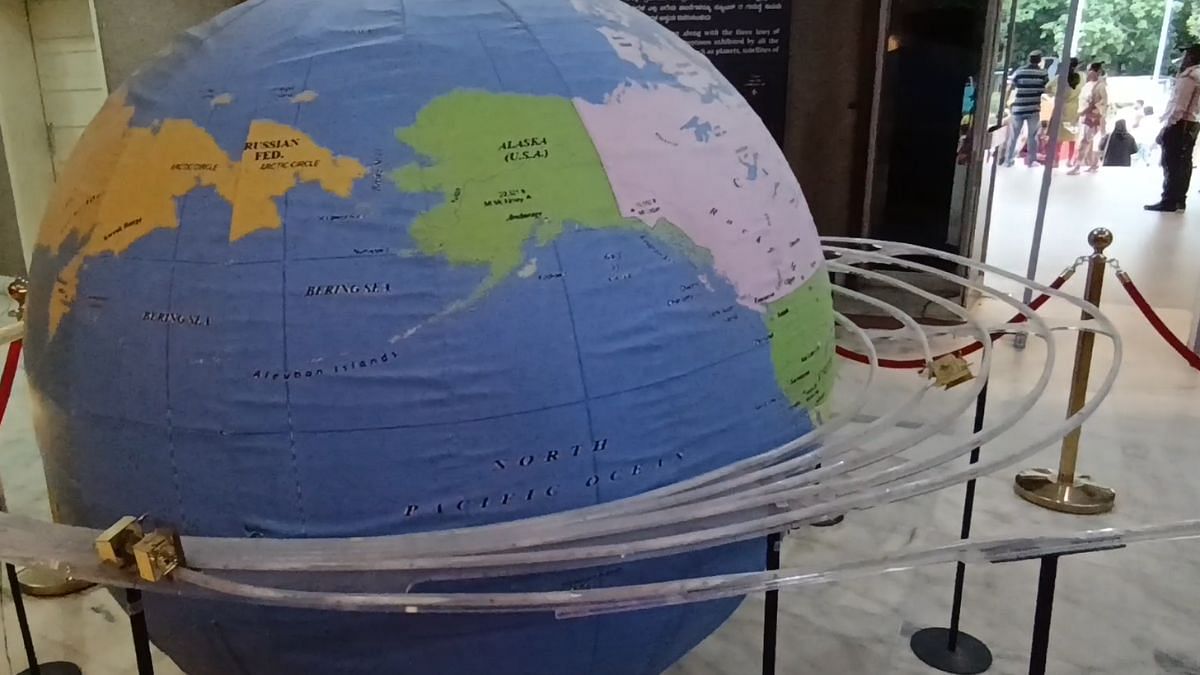
Also read: Inside CCMB Hyderabad—where scientists turn elephant blood, tiger bones into criminal evidence
Living the cosmos legacy
A gospel, moderate deep voice welcomed the audience to the odyssey. The stars lit up. Within no time, the kids in the room clapped.
“The moment the entire sky theatre is darkened and the stars appear, they invariably clap,” said Guruprasad.
When the planetarium was first conceptualized in the early 1980s, it faced typical hurdles. Procuring even a simple astronomical poster was a big deal. “For example, getting a poster of Jupiter required bank approvals, customs clearance- a process that took 8-9 months,” said Galgallil.
The Sky Theatre opened in 1989 with its first show “Our Sun and His Family.” It blended science with Indian cultural themes, and used music and illustrations all produced locally. Over time, JNP produced over 20 shows in English and Kannada. The first version of the show was scripted by C V Vishweshwara, the founder director of the JNP.
The now thirty-five-minute full-dome show demonstrates the power of the hybrid projector system that the planetarium procured in 2017 from Germany.
“It is a combination of a dumbbell-shaped analogue projector (to cast the sky) at the centre of the hall. (And) In that we have 6 digital projectors (along the sides) to show videos, animations,” said Guruprasad.
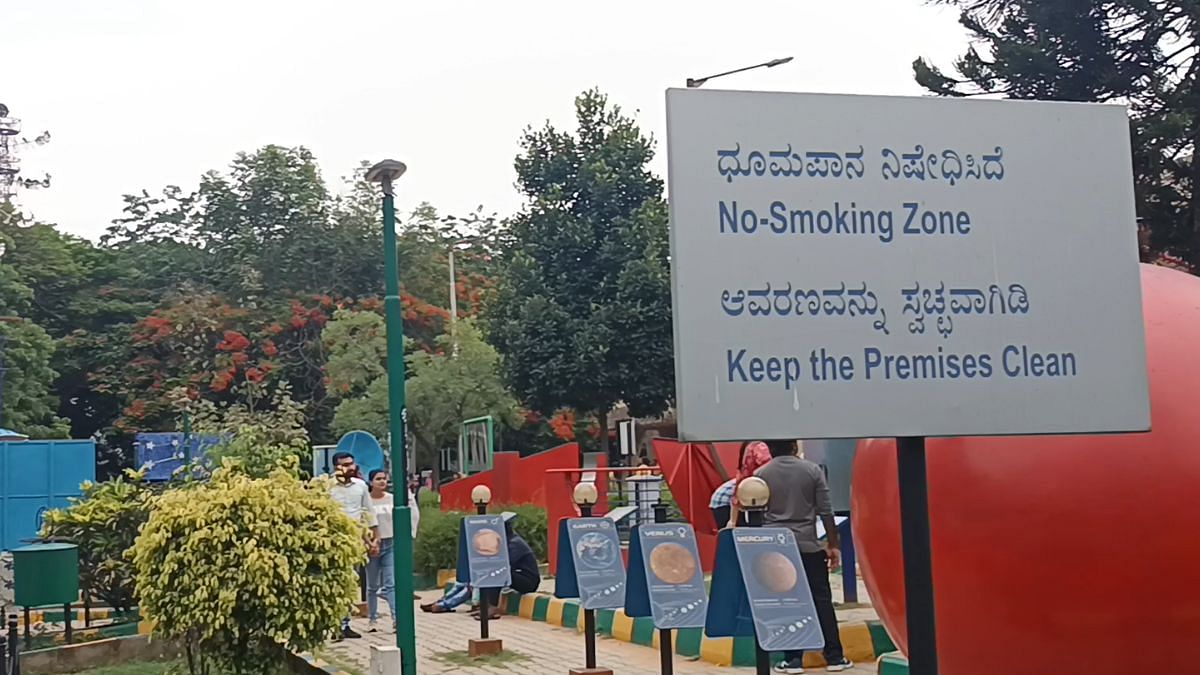
Apart from Exploring the Universe, a show produced in Germany, the planetarium also screens two other shows talking about the other aspects of the sky. For instance, the Dawn of the Space Age marked the human effort to explore space, from the Sputnik to the moon missions.
“Once we get it, we will also voice it in Kannada,” Guruprasad said. Some other shows are added with perspectives from India, too, such as to add more details about the ISRO missions.
The other show, Our Sun and Its Family, is fully owned by JNP. The tickets are also available on BookMyShow at Rs 60.
“My first visit to the planetarium was in 2010, as part of my school picnic,” said Partheeban, who was then in Class six. The twenty-seven-year-old mechanical engineer is still part of most outreach work at JNP. He’s into spreading the joy of astronomy through the Amateurs Bangalore Astronomy Association (ABAA), a bunch of astronomy geeks who gather every Sunday at the JNP.
As Guruprasad walked out of the office, he glowingly spoke about the model of Aryabhata, gifted by ISRO, as big as the original satellite. Soon, the model will be up for display, for the visitors to look at it and wonder about the space odyssey.
“In the domain of astronomy, India has achieved tremendously. Establishment of a culture is important that provides sustenance to your progress of science within the country. We have enhanced our outreach from that point of view,” Guruprasad said.
The article is part of a three-part series on state of planetariums in India. Read all articles here.
(Edited by Anurag Chaubey)



